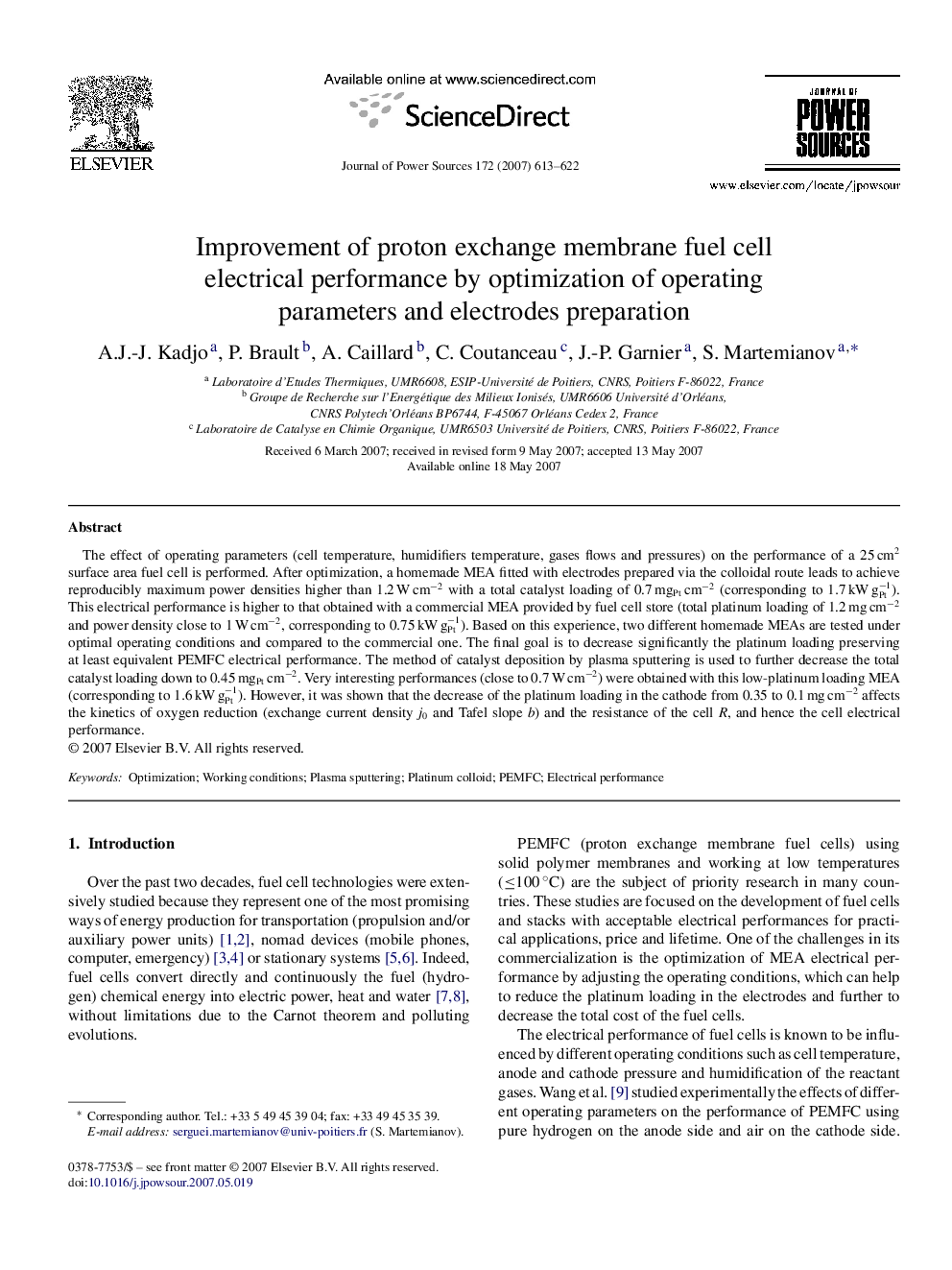| Article ID | Journal | Published Year | Pages | File Type |
|---|---|---|---|---|
| 1286180 | Journal of Power Sources | 2007 | 10 Pages |
The effect of operating parameters (cell temperature, humidifiers temperature, gases flows and pressures) on the performance of a 25 cm2 surface area fuel cell is performed. After optimization, a homemade MEA fitted with electrodes prepared via the colloidal route leads to achieve reproducibly maximum power densities higher than 1.2 W cm−2 with a total catalyst loading of 0.7 mgPt cm−2 (corresponding to 1.7 kW gPt−1). This electrical performance is higher to that obtained with a commercial MEA provided by fuel cell store (total platinum loading of 1.2 mg cm−2 and power density close to 1 W cm−2, corresponding to 0.75 kW gPt−1). Based on this experience, two different homemade MEAs are tested under optimal operating conditions and compared to the commercial one. The final goal is to decrease significantly the platinum loading preserving at least equivalent PEMFC electrical performance. The method of catalyst deposition by plasma sputtering is used to further decrease the total catalyst loading down to 0.45 mgPt cm−2. Very interesting performances (close to 0.7 W cm−2) were obtained with this low-platinum loading MEA (corresponding to 1.6 kW gPt−1). However, it was shown that the decrease of the platinum loading in the cathode from 0.35 to 0.1 mg cm−2 affects the kinetics of oxygen reduction (exchange current density j0 and Tafel slope b) and the resistance of the cell R, and hence the cell electrical performance.
